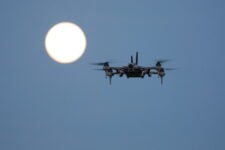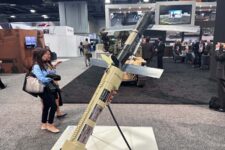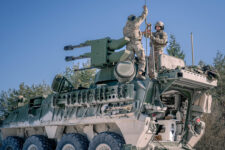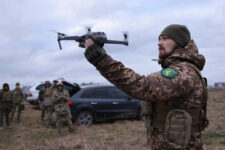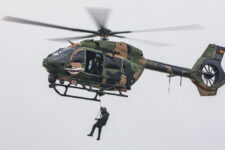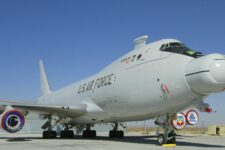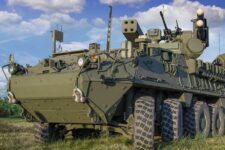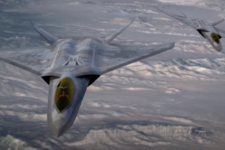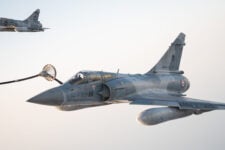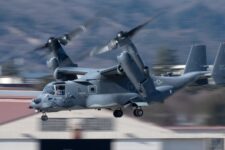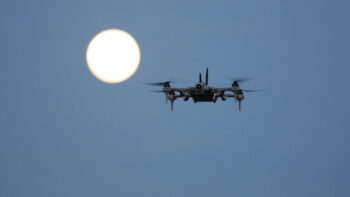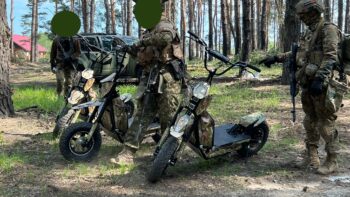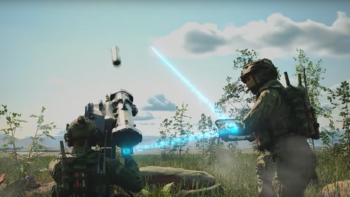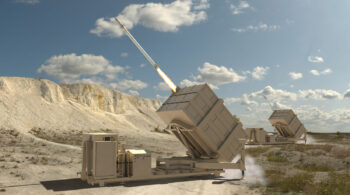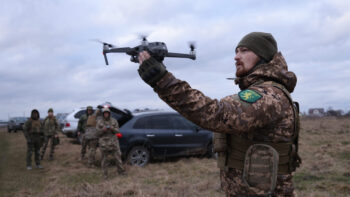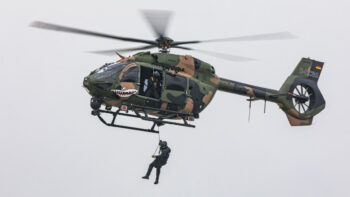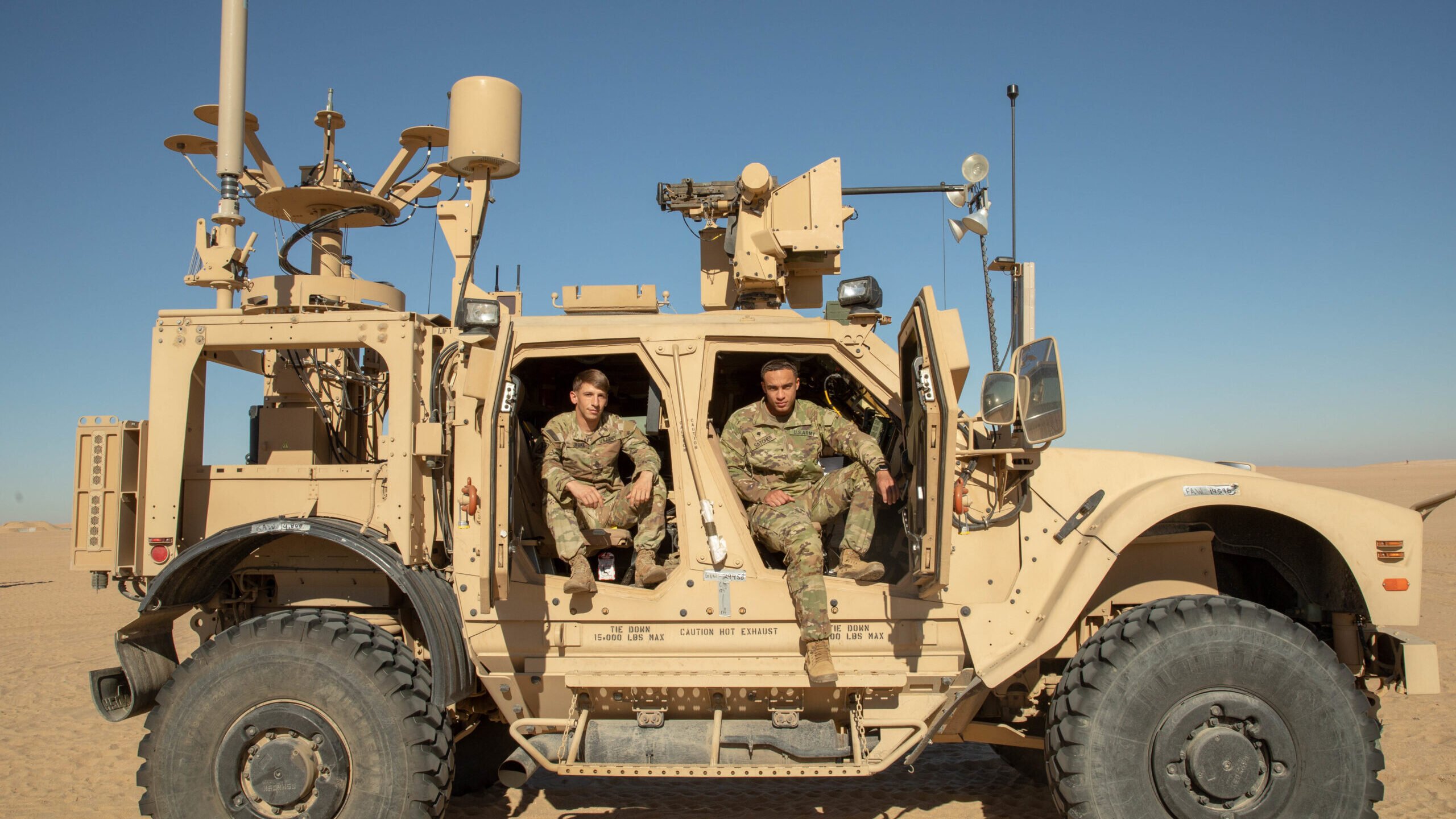
US Army Soldiers with 10th Mountain Division sit in a Mine-Resistant Ambush-Protected All-Terrain Vehicle outfitted with the Mobile Low, Slow, Small Unmanned Aerial Vehicle Integrated Defense System (M-LIDS) outside of Camp Buehring, Kuwait, on Jan. 22, 2022. (US Army/Spc. Damian Mioduszewski)
WASHINGTON — House lawmakers are poised to vote next week on a measure establishing a US Army drone branch, but Army Undersecretary Gabe Camarillo said such a creation isn’t warranted right now and could hamstring service plans.
“It’s an area of specialization that probably isn’t necessarily warranted at this time,” Camarillo told reporters after a Center for a New American Security event today.
“Operating and defending against the drone threat,” he later added, “is something that will be experienced by, you know, all formations at multiple echelons.”
Camarillo’s comments come just days before members of the House Armed Services Committee are slated to mark up the fiscal 2025 defense authorization bill. Ahead of the marathon event, this week Chairman Mike Rogers released a package of changes likely to be included in the bill, including a provision for the Army to establish “Drone Corps as a basic branch.”
That corps would include a chief, along with commissioned and non-commissioned officers, with primary responsibility over small and medium sized unmanned aerial systems (UAS that weigh less than 1,320 pounds) and counter-UAS (C-UAS). The new branch would focus on integrating those systems inside the force, developing and testing out new systems, providing specialized training, and developing C-UAS strategies and capabilities.
The Army currently has 17 specialty branches including armor, aviation and field artillery. And chatter about an 18th branch focused on drones and C-UAS capabilities has picked up momentum as their role in the wars in Ukraine and the Middle East only grows.
However, Camarillo contends that now is not the right time to add a new a branch, and doing so would disrupt ongoing distributed efforts and not accelerate the pace the service is buying these weapons.
“Specializing a singular drone branch to get after the operation of these capabilities … runs counter to what we have been focused on, which is ensuring that we are experimenting with different parts of different formations to understand how best to employ them to achieve the battlefield effects that we want to have,” he added.
When it comes to C-UAS, for example, the Army is currently heading up the Joint Counter-small Unmanned Aircraft Systems Office to help identify systems across the department, launching a Joint C-sUAS University at Ft. Sill, Okla., and rushing new systems like high-energy lasers into theater to test them out.
When it comes to aerial drones, the service is rebalancing its portfolio and looking for ways to acquire new capabilities, while also encouraging units to experiment with approved commercial off-the-shelf (COTS) capabilities.
“It’s important, in my view, to get after giving units … these COTS UAS capabilities to let them experiment: I want to better understand the [tactics techniques and procedures] TTPs about how they’re going to employ them at different echelons and to be able to understand, you know, how that affects the way that our formations will fight,” Camarillo told the audience at the event.
“Most importantly, do we have our buying processes in place in order to be able to get there, you know, [and] having a branch or a [certificate of excellence] COE or anything like that, it’s not going to help us buy anything faster, or get us more resources against this problem set,” he later added.
Red Cat unveils low-cost ‘family’ of small ISR, strike drones
The company revealed a new drone dubbed FANG and is championing a separate system the company is acquiring by buying manufacturer FlightWave Aerospace Systems.
